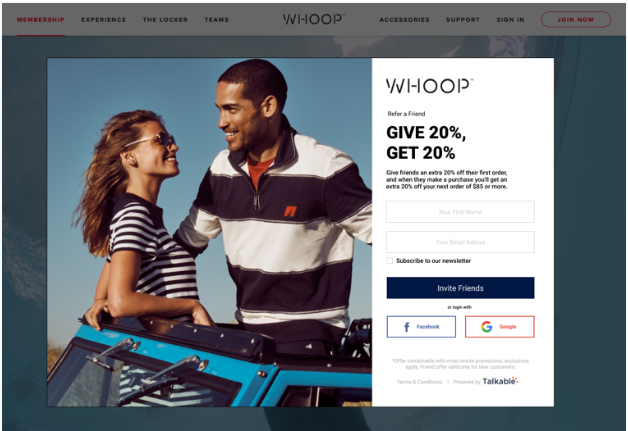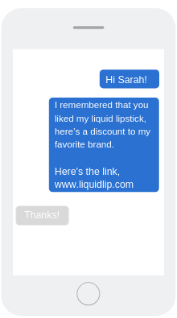
When it comes to creating a referral marketing program, the first thing you need to learn about is the marketing funnel. It’s often compared to a journey for a reason. The marketing funnel starts with the largest section of your funnel, where you create awareness. Awareness is critical because it gives your potential audience a basic idea about your business or referral offer. This, in turn, makes them consider whether or not your offer is worth sharing. The process then flows to the decision stage, where consumers make a purchase decision.

Despite this well-known model, marketers tend to forget about the customer stages of the funnel. With referral marketing, the biggest challenge is at the top of the funnel, where referral offers should get the most traffic.

Referral marketing depends on your customers’ willingness to share your brand with their friends and family. To find out where your referral marketing program can increase its conversions, you first have to identify which part of the funnel is getting stuck.
How to Open Up the Top of the Funnel
Doing things halfway is the main reason for disappointing performances in referral programs. It will never be ever enough to just set up a referral program and forget about it. It requires effective promotion. Just adding more placements for your offer can increase your referral revenue by 100%.
A good way to start is to create a standalone landing page for the referral program while adding CTAs across the website that lead to it:

Standalone landing pages — the most effective placements that drive up to a 16% advocacy rate.

Pop-ups that appear once a visitor enters your website

Banners or promo-copy with CTAs on product pages

Floating widgets sitewide
You could also have separate pop-up windows promoting your referral offer, perhaps on your post-purchase pages.
On the other hand, you shouldn’t forget about more traditional online marketing channels which are proven to reach many people of different ages and interests.
With referral marketing programs, you start by telling your advocates about the available rewards for sharing your brand. If advocates see your rewards but you still get very few shares, your program is suffering from a poor share rate. Your share rate is the proportion of people who see your referral incentive who then decide to share the offer.
Creating a compelling reward does not require eating into your margins. There are several types of rewards which are well-established in business circles and are used often:
Discounts
Naturally, the greater the difference between your original and sale prices, the more attractive your offer will be. Having your old price displayed and crossed out prompts us to compare it to the new one. There are many factors like visual perception. For instance, one study indicates that removing the decimal point makes prices look lower and more eye-catching. There’s nothing better than A/B testing to find out which kind of discount hooks your customers.
Gifts
It will be polite to thank customers for referring friends your way. This could be a gift certificate for your business, a gift card for another business such as Amazon or Sephora, a nice item, or even a sticker pack. Swag of all sorts is a great way to reward your customers. It all depends on your budget and goals.
Rybbon has a great variety of cash and gift card rewards which help attract more customers to participate in your referral program. This is especially good in cases when discounts don’t work. If you’re going to work with influencers, there are more than 50 options of US & International digital gifts, including Apple, Amazon, and Mastercard gift cards— and influencers, as it turns out, value brand quality and notoriety.
Besides, the option to choose gives people more freedom. No one likes being boxed in, even when it comes to choosing a reward.
Added value
This refers to extra conveniences — like free shipping or extra-nice packaging — which you can offer your customers. Sending your customers a box of their favorite make-up items right to their office, for instance, shows them how much you care.

Bonus points
This kind of reward works well for businesses which want to combine pre-existing or upcoming loyalty programs. People are typically fine with the idea of collecting points to then spend on future purchases. Points rewards give customers freedom of choice. They can select whichever gift which they like. To make sure your customers don’t forget about their bonuses, send them a few reminders along with offers or catalogues.
Double-sided rewards
The principle of this type of reward lies in its name: both the advocate and a friend get a reward. It’s worth emphasizing that tests have proven that offering bigger friend rewards raises your advocacy rate. According to Talkable’s customer data, only 14% of advocated redeem their rewards. This means that advocates earn their rewards but do not redeem their discounts before they expire.

Sharing channels also matter: sometimes your advocates will gladly send a text with a link to their friends, but won’t share the offer via Facebook Messenger. To learn what share channels your audience prefers to use when referring friends, nothing works better than A/B testing.
When setting up a referral program for Outdoor Research, Talkable tested sharing channels and concluded that emphasizing SMS messages as a main share channel increased friends’ website visits up to 7%.
Getting Friends to Click Through to the Friend Claim Page
Once advocates have shared your offer with their friends, the next thing you need to pay attention to is their friends’ engagement with the reward.
Let’s say your friend sends you a text with a discount for their favorite cosmetic brand. Since you’ve received the link, it’s up to you whether to check out the brand or not. To entice your potential new customers, it’s helpful to have double-sided rewards so that both your advocates and their friends get rewarded for sharing or making purchases.
In addition, you can make your offer more enticing by using appealing on-brand messaging and utilizing a clear call to action. Your business can also let advocates create a personal message. For example, the text that was shared could say:

In addition, you can have advocates who also want their friends to make a purchase send reminder emails to their friends.
An email from an advocate could look like this:

Creating a program that utilizes the right copy, share channels, and reminder emails are all ways to help get friends to click through your friend claim page to visit your eCommerce store.
Get Your Advocates and Friends to Purchase
When your referred friends have reached the bottom of the funnel, you have the opportunity to convert them into customers. Basically, your referred friends are either going to make a purchase or realize that they have no need for your brand. To check out your conversion rate, look at your website visits in comparison to the number of purchases made.
Make sure that it’s easy for friends to make a purchase. For example, auto-apply your coupon so that your advocates’ friends can immediately see their savings. If your friend rewards aren’t attractive, your advocates’ friends may not find the reward compelling enough for them to take the leap and try a new brand. Make sure that your rewards for both your advocates and their friends are compelling.
Lastly, don’t forget about the advocates who received rewards for their converted friends. Advocates using coupons are another opportunity for your business to get subsequent sales from your referral marketing program.
If your referral program doesn’t have a high conversion rate, first identify which area of the marketing funnel needs optimization. Focus on the specific area of the funnel to help move more friends and advocates to ultimately convert. Read our referral marketing blog, use tips and best practices to help your program start converting more people.